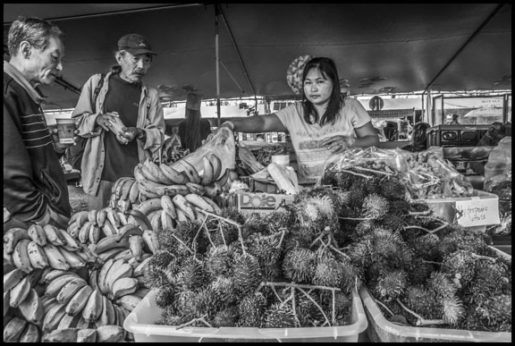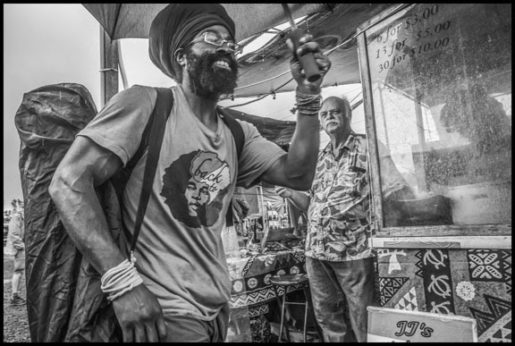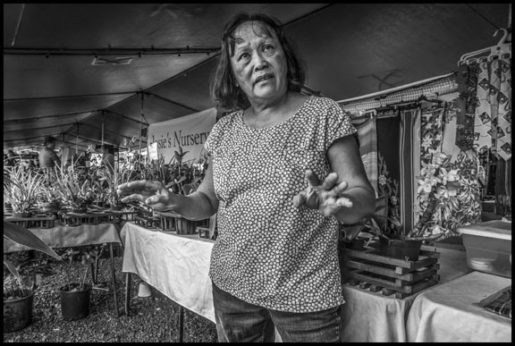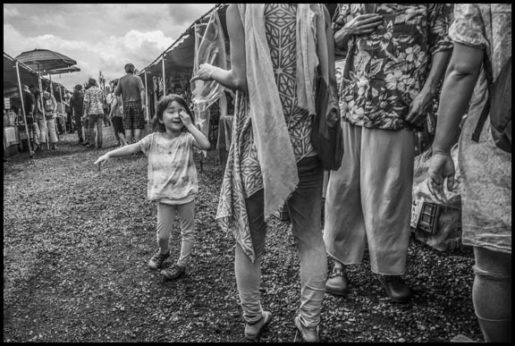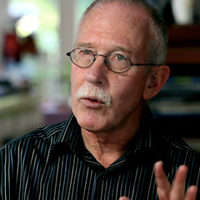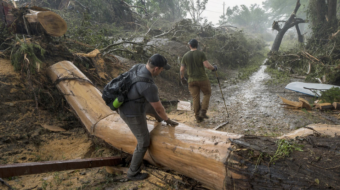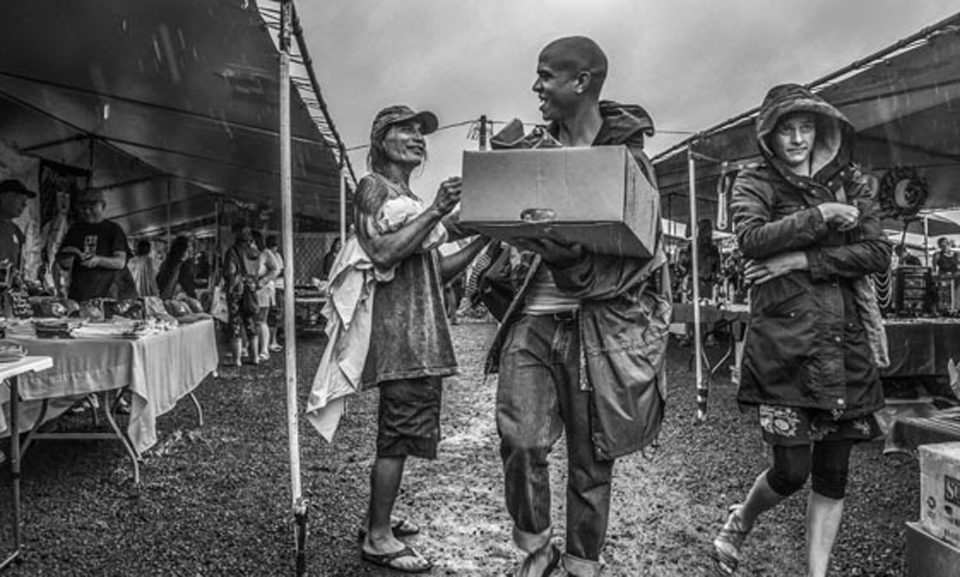
A couple of months before the eruption of the Kilauea volcano it was raining in Puna. At the Saturday farmers’ market children pulled at their parents’ hands, asking for papayas or bananas, still wet from the downpour. In the bustle among the stalls, who was thinking of what was to come?
Within a few weeks we were mesmerized by images of fountains of glowing lava. Video shot by drones showed rivers of molten rock heading implacably toward the ocean. They’ve both provided us a visual language for understanding the destruction and awful price of the eruption. So many homes burned out and now under the lava flow. Hundreds of people displaced.
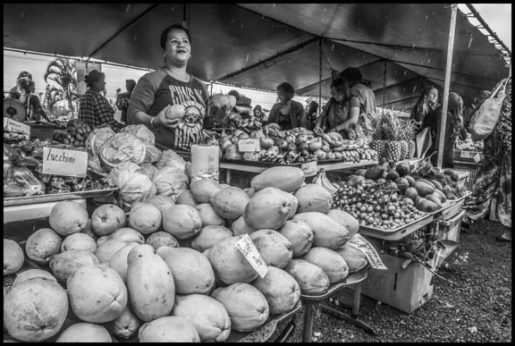
The people of Puna lived in a beautiful part of the Big Island, a district of many small farms. People grow papayas and mangos. Some produce in the stalls, like the taro, have local origins, while others, like Hawai’i’s giant avocados, came originally from the mainland. Orchids are sold in the stalls too, yet seem omnipresent throughout Puna’s subtropical landscape.
The people here are very diverse. Many are poor – this is one of the least expensive places to live on the islands. Native Hawai’ians live beside African-Americans, immigrants from Asian countries across the Pacific, and white retirees from the mainland.
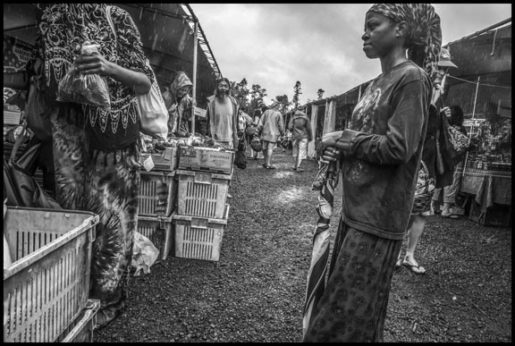
In the Maku’u farmers’ market every Saturday you can see them all. It’s not far from Pahoa and the edge of the eruption, just a few miles up highway 130. The market must be having some hard times now, though. Some of the farms have been overtaken by the lava. Who knows whether displaced people can afford to buy fruit at the stalls of those farmers still able to come and sell what they’re growing?
These images were taken a few months before the eruption started. They’re just a way of looking at who lives in Puna, a community living on the side of a volcano.
